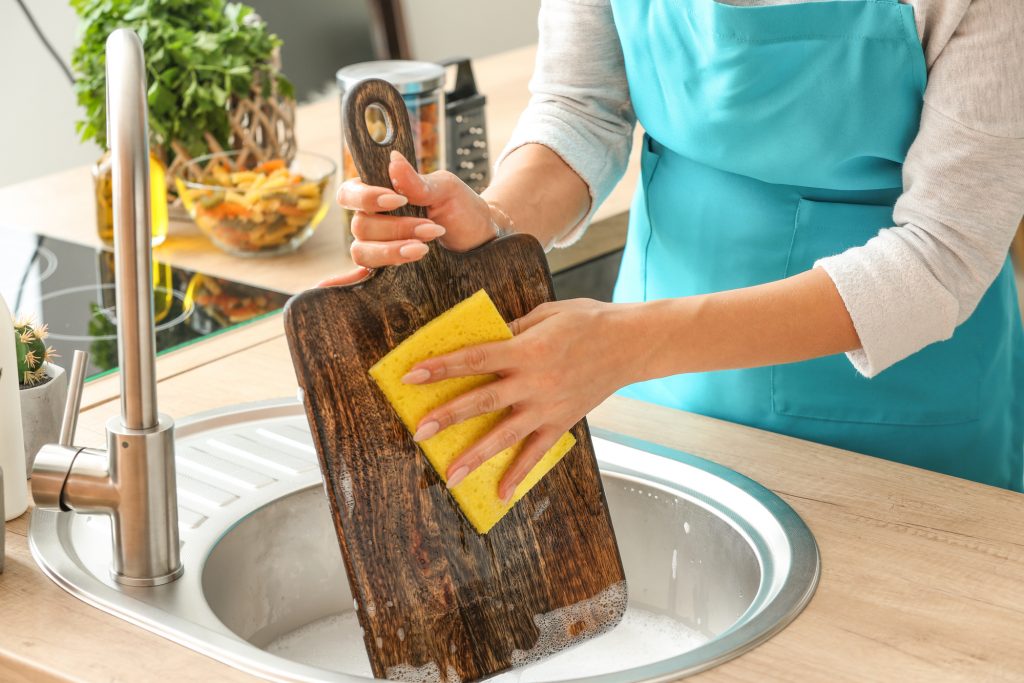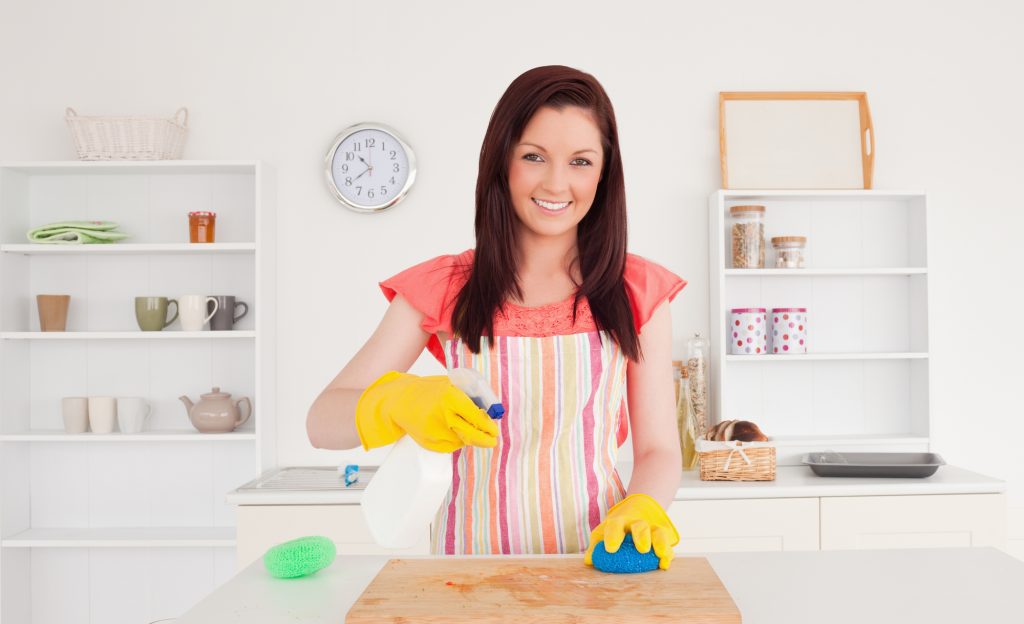Cleaning a cutting board may seem like an easy task – you wash it with warm soapy water, and you’re done. While it’s reported that 90% of Americans wash their cutting boards after using them for raw meat or seafood, that doesn’t mean the cutting boards are properly washed.
If you’re cutting various proteins like meat and fish on your cutting board, you could be unintentionally adding harmful bacteria to other food that you cut, like vegetables or fruits. This is especially true if your cutting boards have knife cuts where bacteria like to hide.
Below, you’ll find a guide on how to properly clean cutting boards so you can avoid the worry of cross-contamination. This article covers plastic and wooden boards, aiding you in keeping both varieties clean.
How to Clean Plastic Cutting Boards
This section explores how to clean and sanitize plastic boards properly and what to avoid to maximize their lifecycle.

How Often?
Of course, plastic cutting boards should be washed after every use. However, it’s important to deep clean and sanitizes them every few weeks. As a note, they should be deep cleaned every time you use them to cut protein.
Cleaning plastic cutting boards every day is much easier than other materials as they can be put into the dishwasher and are quite durable. However, there are some spots that even a dishwasher cannot clean completely.
As plastic cutting boards are used, they accrue cuts from knives, and bacteria and small bits of food can get into these spots. Because of this, it’s necessary to sanitize and deep clean plastic cutting boards via another method than a dishwasher.
These plastic cutting boards have become more common among chefs as they’re easier to clean, and you can use them for protein and vegetables with less worry of cross-contamination if they’re properly cleaned.
Besides food getting stuck in cracks and cuts on plastic cutting boards, some fibers pop up as the cutting board starts wearing down. These fibers can also get caught on food and make an easy breeding ground for bacteria.
Recommended Cleaning Method
There are multiple ways to deep clean plastic cutting boards. However, two of the most popular methods include white vinegar and hydrogen peroxide.
The first step is washing with hot water, dish soap, and a scrub brush. This ensures you get the larger particles off the cutting board. Then, use a 1:1 mixture of water and white vinegar to soak the cutting board. Alternatively, you can spray the cutting board with a 3% hydrogen peroxide mixture. Let the solution soak on the board for five minutes, then wash again with soapy water and dry with a towel. Make sure to let the cutting board air-dry afterward.
These cleaning methods aid in keeping bacteria at bay. White vinegar helps clean the present bacteria, while hydrogen peroxide helps keep bacteria from developing.

Avoid This When Cleaning Plastic Cutting Boards
Don’t add the plastic cutting board to your dishwasher too often. As dishwashers run at high temperatures to disinfect items, they will eventually start warping these cutting boards, making them unsafe to use.
How Do You Clean Wood/Bamboo Cutting Boards?
This section explores the correct way to clean a bamboo cutting board. As these boards can be fussier, it’s important to clean them properly.
How Often?
Of course, it’s necessary to clean your wooden or bamboo cutting board after each use. Deep cleaning a wooden cutting board is necessary every two weeks to one month, depending on how often you use it. Like with plastic cutting boards, you’ll need to sanitize the wooden cutting board after cutting meat or fish.
Wooden and bamboo cutting boards are not as durable as plastic. They are porous and can easily crack or become damaged if they’re constantly kept in a moist environment (aka washing too often). Before deep cleaning a wooden cutting board, it’s necessary to consider whether a deep cleaning is needed before proceeding. As wooden cutting boards are pricier, the goal is to keep them for as long as possible while promoting a clean kitchen environment.
Wooden and bamboo cutting boards are most commonly used to cut meat and fish, as using this type of board helps protect your knives. However, it’s always necessary to maintain a clean cutting board surface to avoid bacteria spreading from the meat to vegetables or other food items. If not properly cleaned, the cutting board can hold harmful germs.
Best Way to Clean Wood/Bamboo Cutting Boards
As bamboo and wood are softer surfaces, it’s easier for these cutting boards to have incisions from knives. Because of this, bamboo cutting boards should be disinfected first and then deep cleaned.
Start by cleaning wood cutting boards with soap, water, and a soft sponge. Make sure to clean the incisions as well as possible. Dry with paper towels or a clean kitchen towel immediately after.
There are two types of cleaning products that you can use to deep clean wooden cutting boards – a premade product and a homemade cleaning solution. A store-bought cutting board cleaner, like this variety, is food-safe and uses lemon oil to keep the wood from drying out while helping to kill bacteria.
For an at-home version, you can add 1 cup of baking soda (not baking powder) to the top of your cutting board. Then, pour one cup of white vinegar on top and allow it to sit for a few minutes. Rinse thoroughly and dry with a paper towel. It’s necessary to use a product like food-grade mineral oil after the wood cutting board is dry to rehydrate the wood.

Avoid This When Cleaning Wood/Bamboo Cutting Boards
Since wooden surfaces are porous, they can be negatively affected and even destroyed when they come in contact with water. It’s best to avoid keeping wooden cutting boards in damp environments – like sinks for a prolonged time. Using a dishwasher to clean a bamboo cutting board will lead to a damaged cutting board.
Soaking and leaving the cutting board wet after hand washing will also lead to damaged cutting boards.
Cleaning your cutting board does not have a one-size-fits-all solution. The correct cleaning method varies based on your cutting board’s material (like if you have composite cutting boards) and what you’re using it for, like meat or veggies.
We recommend keeping your chopping board clean to increase its lifetime and offer a safe cooking environment in your kitchen. Using the above methods will help you maximize the use of your plastic and wooden chopping boards.
Summary
There are lots of methods for how to clean our cutting board. Because it is the most useful tool in the kitchen, which comes in contact with almost everything that enters our body, we recommend that you clean it thoroughly at least once a month.




Post Your Thoughts